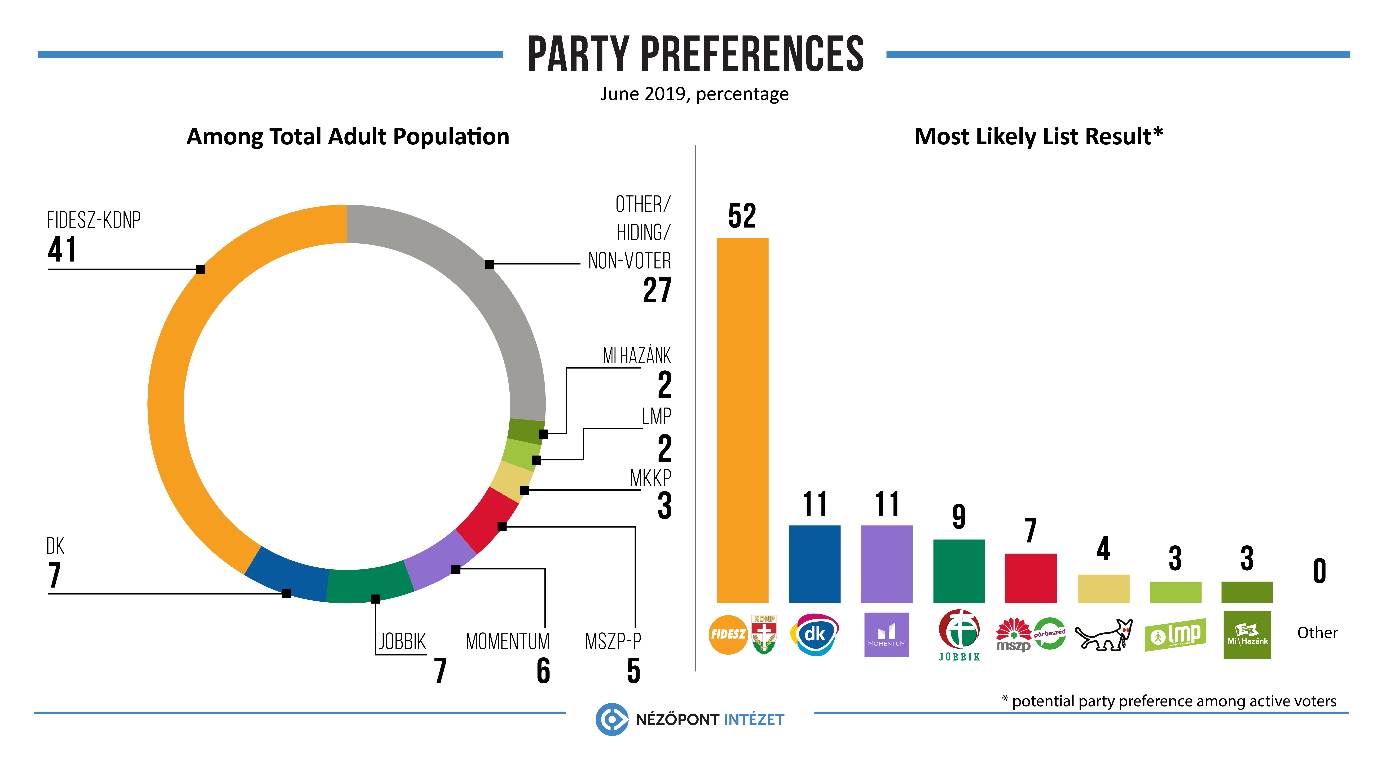Fidesz-KDNP has been leading ahead of opposition parties by 40 percentage points since the EP elections, with its popularity remaining over 50 percent.
The number of opposition sympathisers is smaller, with the Democratic Coalition and Momentum standing head-to-head in the virtual race for second place, reveals a public opinion poll conducted by Nézőpont Intézet in July on behalf of Magyar Nemzet newspaper.
Fidesz-KDNP leads steadily among the total adult population as well, with support for the governing party alliance at 41 percentage points. In this category the popularity of opposition parties is more even: Democratic Coalition and Jobbik stand at 7-7, Momentum at 6, and the MSZP-P alliance at 5 percent. Preference for any of the opposition parties remains single digit among voting age Hungarians.

In terms of most likely list results, Fidesz-KDNP has an advantage of 40 percentage points. If elections were held this Sunday, the government coalition would receive 52 percent on the domestic list, which is almost identical to their EP election result. Among the opposition, Democratic Coalition and Momentum Movement boast the most active supporters and would score 11 percentage points each on the list, meaning that the Ferenc Gyurcsány led party did not manage to break away from Momentum. The MSZP-P alliance, plagued by ongoing domestic political scandals in July, stands at 7 percent among active voters, indicating that hard times for the Bertalan Tóth led party are not over yet. Support for Jobbik remains in single digits. The party would score 9 percentage points if elections were held this Sunday, suggesting a still inactive voter base. Neither the LMP that has lost its female co-chair (3 percent), nor Our Hungary Movement (3 percent) or the Hungarian Two-Tailed Dog Party (4 percent) meet the minimum requirement of 5 percent among active voters that is necessary to receive mandates.
Methodology
The public opinion poll was conducted by Nézőpont Intézet between July 2-28, 2019 involving personal interviews with 5,000 respondents. The sample is representative of the population aged 18+ by gender, age, region, settlement type and educational level. A sample of 5,000 at 95 percent accuracy level has a 1.4 percent margin of error.
